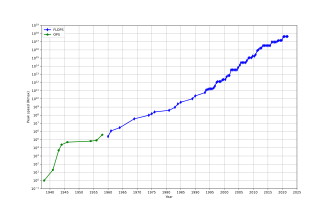High-performance computing clouds

Cloud computing with its recent and rapid expansions and development have grabbed the attention of high-performance computing (HPC) users and developers in recent years. Cloud computing attempts to provide HPC-as-a-service exactly like other forms of services available in the cloud such as software as a service, platform as a service, and infrastructure as a service. HPC users may benefit from the cloud in different angles such as scalability, resources being on-demand, fast, and inexpensive. On the other hand, moving HPC applications have a set of challenges too. Good examples of such challenges are virtualization overhead in the cloud, multi-tenancy of resources, and network latency issues. Much research is currently being done to overcome these challenges and make HPC in the cloud a more realistic possibility.
In 2016 Penguin Computing, R-HPC, Amazon Web Services, Univa, Silicon Graphics International, Sabalcore, and Gomput started to offer HPC cloud computing. The Penguin On Demand (POD) cloud is a bare-metal compute model to execute code, but each user is given virtualized login node. POD computing nodes are connected via nonvirtualized 10 Gbit/s Ethernet or QDR InfiniBand networks. User connectivity to the POD data center ranges from 50 Mbit/s to 1 Gbit/s. Citing Amazon's EC2 Elastic Compute Cloud, Penguin Computing argues that virtualization of compute nodes is not suitable for HPC. Penguin Computing has also criticized that HPC clouds may allocated computing nodes to customers that are far apart, causing latency that impairs performance for some HPC applications.
Comments
Post a Comment